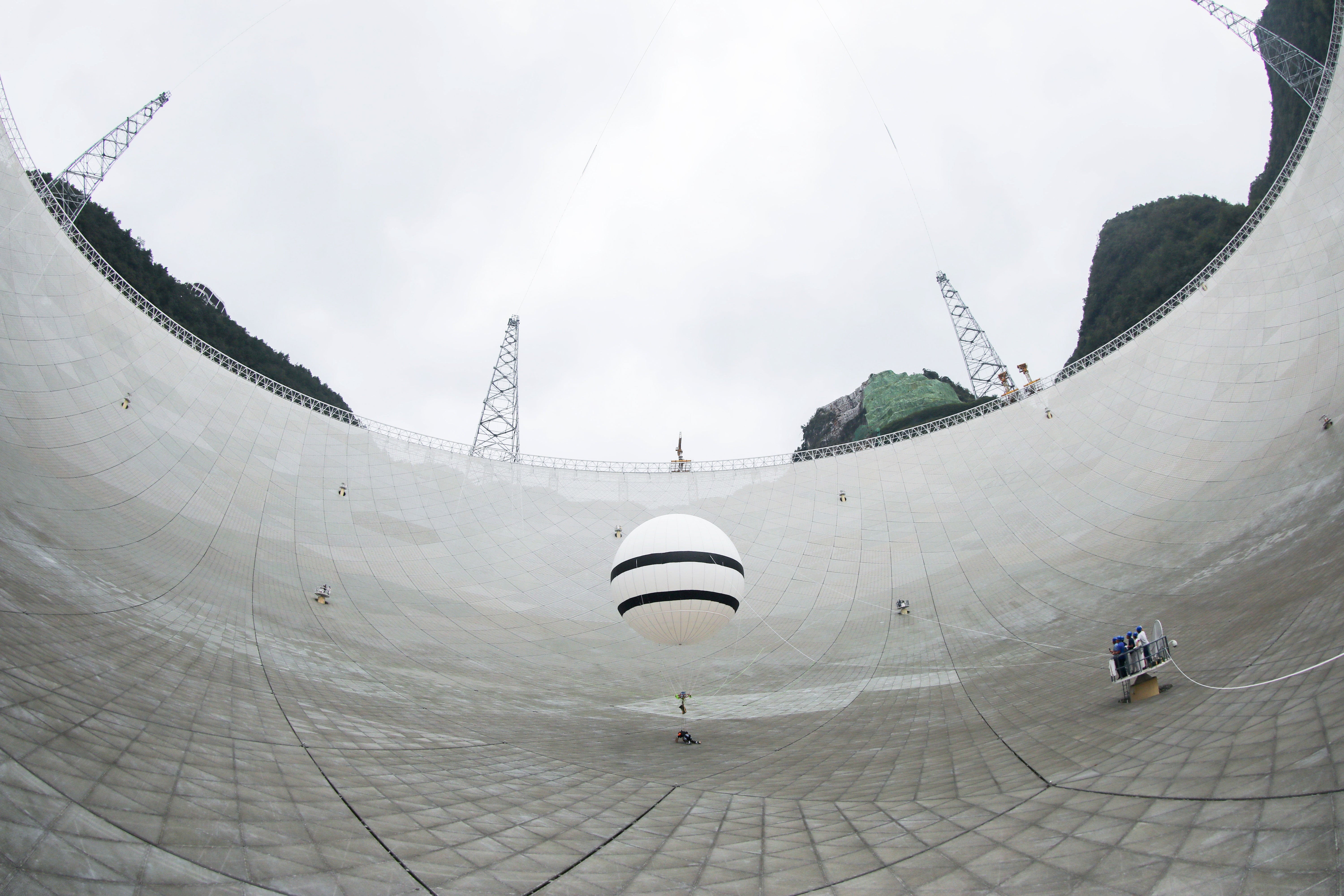Science
Related: About this forumMassive Space Structure May Have Been Left by Galactic 'Intruder,' Astronomers Say
Scientists have discovered an unexplained structure made of hydrogen gas that stretches for nearly two million light years near a famous group of interacting galaxies, according to a new study.
The strange gas trail may have been formed by an “intruder” galaxy that collided with this galactic group, known as Stephan’s Quintet, about a billion years ago, but it will take more observations to understand the mystery of its formation.
Stephan’s Quintet is a spectacular group of five galaxies located about 300 million light years from Earth with a rich observational history. Named after Édouard Stephan, the astronomer who discovered it in 1877, the quintet was the first compact galaxy group ever spotted, and has since been imaged by countless observatories, including NASA’s James Webb Space Telescope, which is the most powerful observatory ever launched.
Now, scientists led by Cong Xu, a researcher at the National Astronomical Observatories in Beijing, have studied Stephan’s Quintet with the biggest single-dish telescope on Earth: China’s Five-hundred-meter Aperture Spherical radio Telescope (FAST). FAST was able to peer 100 times deeper into the galaxy group than past observations, revealing the never-before-seen gas structure that appears to be associated with the quintet, according to a study published on Wednesday in Nature.
Stephan’s Quintet “is unique among compact groups of galaxies,” said Xu and his colleagues in the study. “Observations have previously shown that interactions between multiple members, including a high-speed intruder galaxy currently colliding into the intragroup medium, have probably generated tidal debris.”
https://www.vice.com/en/article/qjkxbd/massive-space-structure-may-have-been-left-by-galactic-intruder-astronomers-say
Inner 10-year-old astronomer geeking out this morning!
Lovie777
(14,036 posts)in the unlimited space - time continuum.
Judi Lynn
(161,925 posts)Aperture Spherical radio Telescope

In China, a Telescope Offers Cosmic Data Amid Earthly Tensions
REPUBLISH
BY SARAH SCOLES
04.13.2021
The country’s Five-Hundred-Meter Aperture Spherical Radio Telescope will operate in a scientifically tense climate.
Top: In late March, the Five-Hundred-Meter Aperture Spherical Radio Telescope (FAST) became open to proposals from astronomers outside of China for the first time. Visual: Ou Dongqu / Xinhua News Agency via Getty Images
IN THE HILLS of China’s Guizhou province, a natural rock bowl cradles the world’s largest single-dish radio telescope. This instrument, called FAST — the Five-Hundred-Meter Aperture Spherical Radio Telescope — is, as its name suggests, 500 meters, or about 1,640 feet, across, a size that helps scientists detect more distant and fainter objects. And in late March, FAST began accepting scientific proposals from international astronomers for the first time.
The timing couldn’t have been better. In August 2020, a support cable on the next-largest telescope of this sort — part of the Arecibo Observatory in Puerto Rico, the only telescope of its class in the United States — snapped. Another cable followed a few months later. Then, in December, with a puff of dust, the massive instrument platform that once hung above the telescope crashed down, destroying the 305-meter dish.
That disappearance left astronomers like James Cordes of Cornell University scrambling. Cordes studies strange objects called pulsars, spinning cores that remain when giant stars explode at the end of their lives. The leftovers, if oriented the right way, beam radio waves at Earth, like very distant lighthouses. With Arecibo off the table, Cordes — and many other astronomers who used Arecibo to study stars’ evolution and discover distant galaxies — were left with one less option, and no option as sensitive, to do their work.
Until, that is, FAST opened to them, for the first time since its construction finished in 2016. After that initial completion, scientists and engineers spent years commissioning it and bringing it up to full scientific operation. They deemed it ready for proposals from would-be users in China early last year. “The timeline was very tight, and it was extremely difficult to get everything ready for opening to the world that time,” Keping Qiu, a professor in the School of Astronomy and Space Science at Nanjing University, wrote in an email to Undark. Qiu leads the committee that will evaluate the incoming ideas and added, “The FAST group worked very hard over the past year, and now the telescope is making the step forward” by opening up to the world.
More:
https://undark.org/2021/04/13/china-fast-telescope-open-for-business/
Thank you, Jilly in VA.


FAST, the World's Largest Radio Telescope, Zooms in on a Furious Cosmic Source
Staff member conducts maintenance of the reflector panels on the Five-Hundred-Meter Aperture Spherical Radio Telescope (FAST) with the help of a microgravity mechanism. This mechanism aims to help reduce the maintenance staff’s body weight to a value within the reflector panels’ range of durability using a helium-filled balloon that is 7.6 meters in diameter. Credit: Alamy
From article about the telescope, at:
https://www.scientificamerican.com/article/fast-the-worlds-largest-radio-telescope-zooms-in-on-a-furious-cosmic-source/